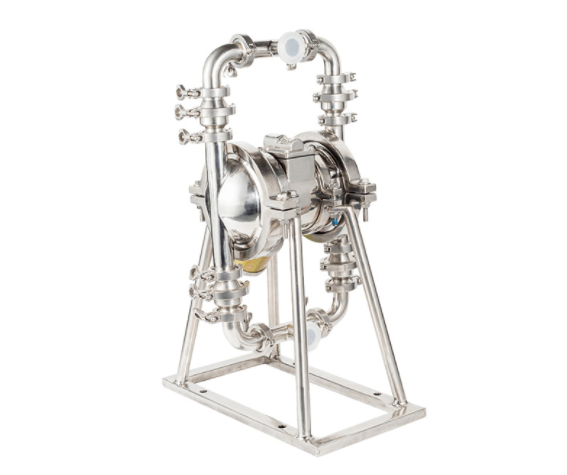What are sanitary diaphragm pumps and how do they work?
Introduction:
In industries where hygiene and contamination control are critical, such as the food and beverage, pharmaceutical, and biotechnology sectors, the choice of equipment plays a vital role in maintaining product integrity. One such equipment that fulfills these requirements is the sanitary diaphragm pump. In this article, we will explore what sanitary diaphragm pumps are, how they work, and their significance in ensuring hygienic fluid transfer.
Understanding Sanitary Diaphragm Pumps:
Sanitary diaphragm pumps, also known as food-grade diaphragm pumps or hygienic diaphragm pumps, are specially designed pumps that are used for transferring fluids in applications where cleanliness, sterility, and product integrity are of utmost importance. These pumps are specifically engineered to meet the stringent sanitary standards and regulatory requirements of industries dealing with sensitive products.
Working Principle of Sanitary Diaphragm Pumps:
Sanitary diaphragm pumps operate on a positive displacement principle, where fluid is moved by the reciprocating action of flexible diaphragms. The pump typically consists of two diaphragms made of chemically resistant materials such as elastomers or PTFE (polytetrafluoroethylene). These diaphragms are separated by a chamber and connected to a common shaft.
The pumping action begins as the shaft moves, causing one diaphragm to contract while the other expands. As the diaphragm contracts, it creates a vacuum that draws fluid into the pump chamber. Simultaneously, the expanding diaphragm pushes the fluid out of the pump chamber. This reciprocating motion creates a pulsating flow, ensuring gentle and controlled fluid transfer.
Key Features and Benefits:
Hygienic Design: Sanitary diaphragm pumps are designed to prevent contamination and maintain product integrity. They feature smooth surfaces, polished finishes, and crevice-free construction to minimize the risk of bacterial growth and product residue buildup.
Versatile Fluid Handling: These pumps can handle a wide range of fluids, including viscous, shear-sensitive, and abrasive materials. Their gentle pumping action prevents product degradation, ensuring the integrity of delicate substances.
Self-Priming and Dry-Run Capabilities: Sanitary diaphragm pumps can self-prime, allowing them to draw fluid from a lower level or suction line without the need for external priming. They are also capable of running dry for extended periods without damage, making them suitable for intermittent or batch operations.
CIP/SIP Compatibility: Cleaning-in-place (CIP) and sterilization-in-place (SIP) are essential processes in hygienic industries. Sanitary diaphragm pumps are designed to withstand the rigorous cleaning and sterilization procedures, ensuring thorough cleaning and eliminating the risk of cross-contamination.
Easy Maintenance: These pumps have a simple and modular design, allowing for easy disassembly and reassembly. The diaphragms and valves can be quickly replaced, minimizing downtime and reducing maintenance costs.
Applications:
Sanitary diaphragm pumps find extensive use in a variety of industries, including:
Food and Beverage: These pumps are employed for transferring food products, such as dairy, sauces, beverages, and confectionery. They are also utilized for handling delicate ingredients like yeast, creams, and flavorings.
Pharmaceutical and Biotechnology: Sanitary diaphragm pumps play a crucial role in pharmaceutical manufacturing, where sterile and precise fluid transfer is essential. They are used for transferring active pharmaceutical ingredients (APIs), vaccines, suspensions, and other critical components.
Personal Care and Cosmetics: In the personal care and cosmetics industry, sanitary diaphragm pumps are utilized for handling lotions, creams, shampoos, and various cosmetic formulations. Their gentle pumping action ensures product integrity and minimizes shear forces.
Chemical and Industrial Processes: These pumps are suitable for handling a range of chemicals, solvents, and abrasive fluids in industrial applications. They find use in paint and coatings manufacturing, petrochemical processing, and wastewater treatment.
Conclusion:
Sanitary diaphragm pumps are indispensable equipment in industries that demand hygienic and contamination-free fluid transfer. Their unique design and positive displacement principle enable gentle and controlled pumping of sensitive materials. By adhering to stringent sanitary standards and offering versatile fluid handling capabilities, these pumps ensure product integrity, minimize downtime, and enhance overall process efficiency. Whether in the food and beverage, pharmaceutical, or chemical industry, sanitary diaphragm pumps play a crucial role in maintaining the highest standards of cleanliness and product quality.



